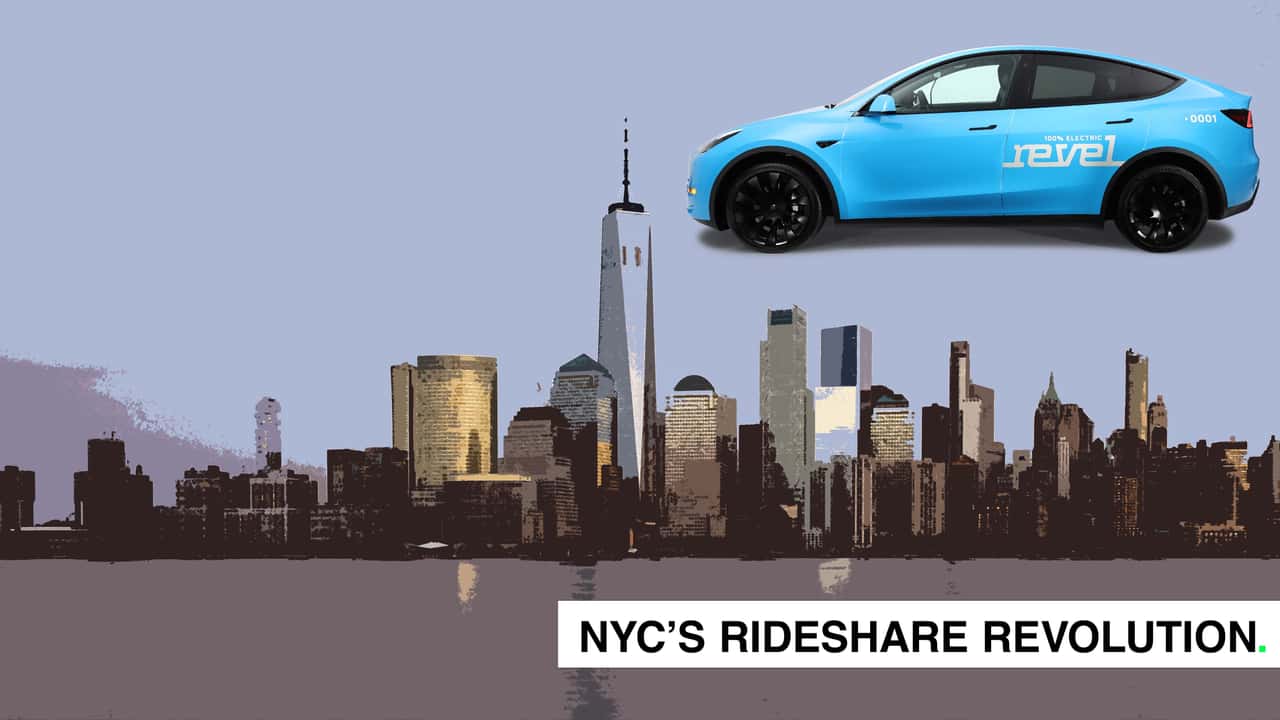New York City is experiencing a significant increase in the number of battery-electric rideshare vehicles on its streets. In just a few months, the number of electric Uber and Lyft cars in the city has quintupled, from around 2,000 to over 10,000, according to Revel and NYC Open Data. This means that almost 10% of the total rideshare fleet in the city is now electric, with hybrids making up 14% and the rest being gas cars.
While this increase in electric vehicles is a step towards a cleaner and more sustainable transportation system, it also poses challenges for the city. The already congested streets are now further crowded with thousands of additional cars. Although there are plans to build more charging stations, the current charging network is likely to become overburdened.
The city of New York has been pushing for a greener rideshare fleet, with Mayor Eric Adams aiming to convert all Uber, Lyft, and rideshare vehicles to electric by 2030. To accelerate this transition, the city has lifted the cap on new for-hire vehicles and mandated that they be electric only. While drivers are embracing electric vehicles, they are currently facing inadequate charging support.
The achievements in increasing the number of electric rideshare vehicles were praised by TLC Commissioner David Do, who stated that the city has made significant progress towards its goals for a cleaner and more sustainable fleet. The focus now is on supporting EV drivers and working with charging providers to bring in more charging options.
The surge in electric rideshare vehicles is a result of the City of New York’s Green Rides Initiative, which mandates all new for-hire vehicles to be electric. This led to a sudden increase in FHV license applications, with the New York City Taxi and Limousine Commission’s daily intake jumping from 150 to 2,000 overnight. However, the New York Taxi Worker’s Alliance has filed a lawsuit against the city, seeking to reinstate the cap on FHVs. A Manhattan Supreme Court judge has temporarily halted the acceptance of further applications.
So far, the TLC has approved around 7,500 FHV applications, with 2,500 still pending. Many drivers have chosen Tesla Model Y and Model 3 vehicles, but other models like the Toyota bZ4x have also gained popularity due to their reputation for reliability and longevity.
The increase in electric rideshare vehicles has led to a surge in activity at charging stations across the city. Charging sessions at Revel stations have increased from an average of 30-40 per day to 300-400 per day, resulting in long lines and wait times at Tesla Superchargers.
Robert Familiar, the senior communications manager at Revel, expressed optimism about the Green Rides Initiative’s impact on the EV charging private sector. He noted that Revel has seen a tenfold increase in public charging at their sites since the influx of new electric rideshares, and this increased demand is encouraging for the expansion of more public charging sites in the future.
New York City has always been at the forefront of innovation and sustainability, and now it has taken a giant leap forward by becoming the first city to introduce 10,000 electric Uber, Lyft, and rideshare vehicles. This groundbreaking initiative is a major step towards reducing greenhouse gas emissions and combating climate change in one of the busiest and most populous cities in the world.
The move comes as part of the city’s ambitious efforts to enhance its air quality and reduce its carbon footprint. By transitioning to electric vehicles for ridesharing services, New York City is not only setting an example for other cities to follow but also improving the health and well-being of its residents.
Electric vehicles produce zero emissions while driving, making them a cleaner and greener alternative to traditional gasoline-powered cars. This means that the introduction of 10,000 electric rideshare vehicles will lead to a significant reduction in air pollution and contribute to the city’s overall goal of becoming carbon neutral in the near future.
Furthermore, the switch to electric vehicles will also benefit drivers by reducing their operating costs. Electric vehicles are more energy-efficient and require less maintenance than traditional cars, leading to lower fuel and maintenance costs for drivers. This will not only make ridesharing services more affordable for customers but also improve the livelihoods of drivers by increasing their earnings.
In addition to the environmental and economic benefits, the introduction of electric rideshare vehicles will also enhance the overall user experience for passengers. Electric vehicles are known for their quiet and smooth operation, providing a more comfortable and enjoyable ride for passengers. The increased availability of electric rideshare vehicles will also help reduce wait times and provide more convenient transportation options for residents and visitors alike.
New York City’s decision to introduce 10,000 electric Uber, Lyft, and rideshare vehicles marks a significant milestone in the city’s commitment to sustainability and environmental stewardship. By leading the way in the transition to clean transportation, New York City is setting a positive example for other cities around the world to follow. With this bold initiative, New York City is proving that a greener, more sustainable future is not only possible but necessary for the well-being of our planet and future generations.

